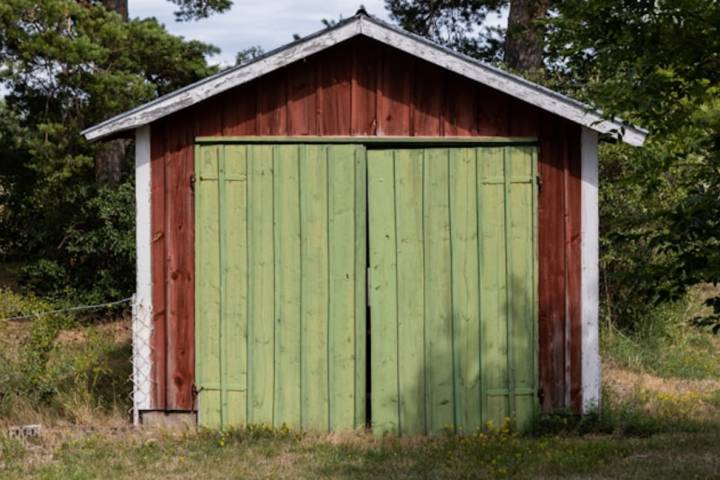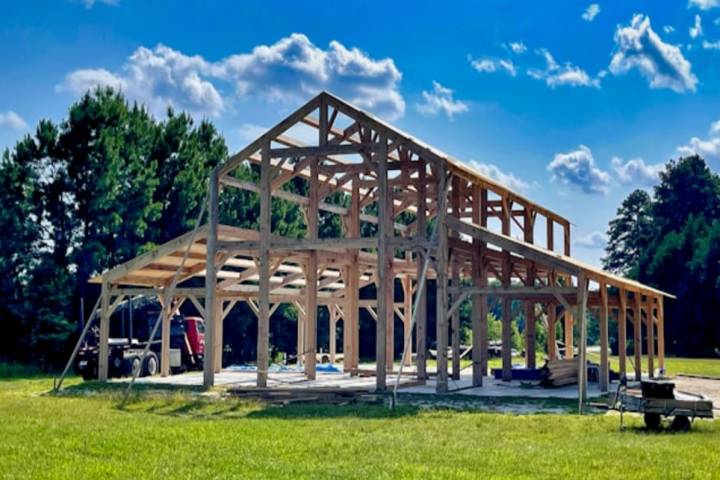
Photo credit: Carl Tronders
A lot of consideration goes into buying a new home, between getting good value for money and the legal side of things. However, if you’re in the market for a property that has an outbuilding, this adds an entirely new element to your decision. It means you’ve got to examine a whole other building, from the structural integrity to the roofing and siding.
In this article, we will guide you on evaluating outbuildings effectively before committing to purchasing a new property. Let’s jump in.
Types of Outbuildings to Evaluate
Pole Barns
Pole barns are storage units made using vertical posts set into the ground, forming the foundations of a barn, with trusses attaching these posts to create the structure’s framework. Metal or vinyl is commonly used for the side walls.
Garages
A garage is a standalone structure, usually designed for storing vehicles or bikes, but it can also serve multiple purposes. Constructed with materials like cement, they come in various sizes, including single or double-car versions, and some are even built as two-story units for added functionality.
Sheds
Sheds are typically compact builds and come with a range of benefits for a home, like everyday storage, such as tools and gardening supplies. The materials used to build them include wood or metal, and they tend to be independent buildings separate from the main house.
Poolhouses
Poolhouses are individual buildings on the grounds of a property that’s beside a swimming pool used for changing, bathing, or recreational purposes. Often, they feature a stylish, enclosed space suitable for relaxing and lounging.
Structural Integrity and Foundation
Photo credit: Gene Gallin
One of the most important steps in evaluating outbuildings is checking their structural integrity and foundation. The foundations need to be inspected for any shifting, which could cause the walls to become off-center. If you notice any signs of deterioration, like bulging caused by moisture damage from a poor drainage system, that’s a major red flag. Sticking with drainage, ensure that the ground is correctly sloped and drainage systems are working properly; you’ll save a lot of money on repairs down the line.
Roof, Siding, and Exterior Condition
Next, you’ll have to evaluate the conditions of the roofing, siding, and exterior of the outbuilding. With roofing, you want to be on the lookout for any cracks or leaks on the outside and inside and pay particular notice to any damp patches indoors, too. If you find something, you may have to pay between $360 and $1,550.
On the sides, rotting and warping should be your focus; press your hands onto the walls to try to find some damp, softened areas. Make a note of the paintwork, too; any signs of fading may mean it’s due for another shade in the near future, which must be taken into account.
Utilities and Systems
Some of the main utilities and systems that will need to be carefully looked at in your new potential outbuilding are electrics, plumbing, heating, and ventilation.
For the electrics, check the wiring, all the exterior and interior lighting, sockets, and fuse boxes to ensure everything works properly. Go through the pipes, water system, and the boiler to inspect the plumbing system. With the heating, it’s only a matter of examining the radiators and see if the system easily turns on and off; don’t forget to cool it either. If people are going to be spending extended periods of time in the structure, run a check on the ventilation situation, such as the vents and fans.
Usability and Suitability for Your Needs
Now is the time to decide whether this outbuilding suits your needs. Decide whether you can make use of it or not; plan out what you’ll use it for and make sure there’s enough space available. Factor in things like accessibility, the additional investment, and if there’s potential to develop it further.
Legal and Zoning Considerations
Finally, the last consideration should be the legal implications of buying a property with an outbuilding. You must do your research on the planning permission laws and check if the structure has been built within the rules. Another thing to factor in is that your intended use for the build may not be doable by law. If you want to turn the building into something like an Airbnb, there could be a different set of boxes that need to be ticked before you go that far.
Use These Pointers to Evaluate the Outbuilding on Your Potential New Property
Buying a new home isn’t easy for anyone, but with the added headache of having another building to examine, it can take a lot of work. For some, it may discourage them from the start, but if you approach the decision as a potential opportunity, the positives could far outweigh the negatives.
We hope you found this blog post on How to Evaluate Outbuildings Before Purchasing a New Home, useful. Be sure to check out our post on What Issues Are Found During Crawl Space Inspections? for more great tips!
Have Experience in the Moving Industry? Want an Additional Income Stream? Work With All Around Moving!
The unique Work With Us program gives the opportunity to experienced moving consultants to run their own Moving Consultant business from anywhere in the United States. Click here to learn more.






